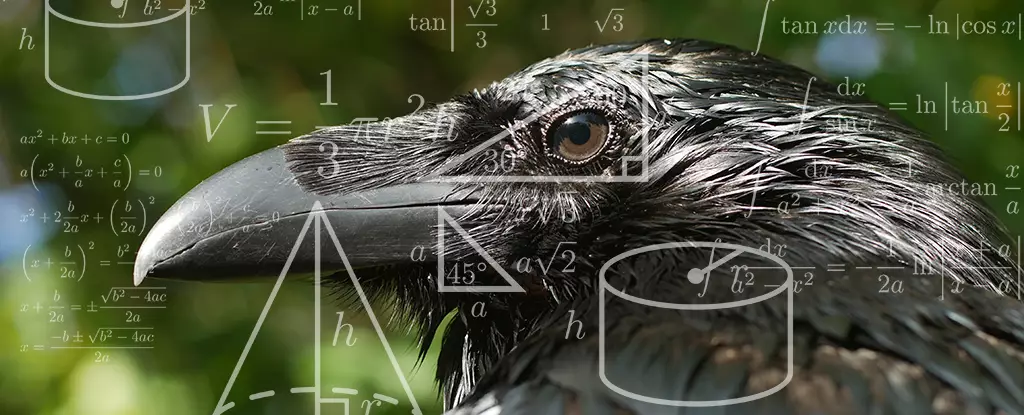Recent research shines a brilliant light on the remarkable cognitive abilities of crows, revealing that these enigmatic creatures possess an innate geometric intuition akin to our own. Until now, the realm of recognizing geometric regularity was thought to be a distinctly human trait. The groundbreaking study led by Andreas Nieder and his team at the University of Tübingen affirms that crows are not just intelligent but are sophisticated thinkers capable of discerning the “odd one out” in a set of geometric shapes. This incredible discovery challenges our long-held beliefs about the cognitive limits of non-human animals and reshapes our understanding of animal intelligence.
What is particularly striking about this research is the implication that cognitive traits once considered uniquely human, such as geometric comprehension, might have deeper evolutionary roots common to other species. While humans have refined their aptitude for geometry through formal education and advanced understanding, the foundation of this cognitive skill appears to be instinctive, facilitating survival through the interaction with their environment.
Unveiling the Crows’ Natural Instincts
In their experiments, the researchers trained two male carrion crows to identify an outlier shape from a series of geometric figures. Crows were presented with five identical shapes, with one that diverged in specifics like angles or side lengths, and the results were striking. The crows excelled when identifying geometric regularity, especially within familiar quadrilaterals. This signifies a pre-existing understanding rather than a learned behavior, challenging the postulation that complex cognitive tasks are solely the province of intelligent mammals.
The study employed various quadrilateral shapes in its trials—ranging from the straightforward square to the more complex rhombus and isosceles trapezoid. The patterns are clear: the more regular the shape, the more adept the crows were at identifying abnormalities. They struggled notably with irregular quadrilaterals, mirroring human difficulties with non-standard shapes. Such parallels suggest a shared geometric cognition pathway that crosses species and aligns with evolutionary development.
The Evolutionary Perspective on Intelligence
What does this tell us about intelligence itself? Crows’ capability to recognize geometric patterns sheds light not only on avian intelligence but also on the evolutionary pressures that may have influenced cognitive development across species. The notion that basic geometric understanding could be a biological imperative enhances our perspective of the animal kingdom, emphasizing that survival often hinges on understanding spatial relations and environmental navigation.
According to Nieder, this geometric intuition might provide survival advantages, potentially aiding crows in tasks ranging from navigation to foraging. This finding invokes a powerful reevaluation of the interplay between intelligence and survival in the animal kingdom, highlighting the extraordinary adaptability and cognitive prowess of species deemed lesser than humans.
Crows: The Unlikely Icons of Intelligence
The intelligence of crows should not merely be viewed as a curiosity; it underscores the remarkable complexity of the animal mind while simultaneously dismantling anthropocentric viewpoints. Crows have long been revered in various cultures for their problem-solving abilities and social structures, yet this latest research elevates them to a new status—icons of intelligence who boast a geometry that rivals our own.
Moreover, the implications extend far beyond mere fascination. Understanding crows’ cognitive abilities opens pathways to reassessing our relationship with the natural world. It invites us to reflect on how we perceive intelligence and the ethics of how we interact with other species. The cognitive capabilities of crows urge us to recognize and celebrate the intelligence that exists outside of human constructs, further bridging the divide between humanity and the animal kingdom.
While we humans have made considerable strides in our understanding of abstract concepts, this research heralds a reminder that nature may have woven the early threads of geometric cognition in various species long before our intellects emerged. Thus, as we stand at the cusp of deciphering animal cognition, crows beckon us to embrace the complexity of life in all its forms, compelling us to be more empathetic and conscious stewards of the planet.


Leave a Reply